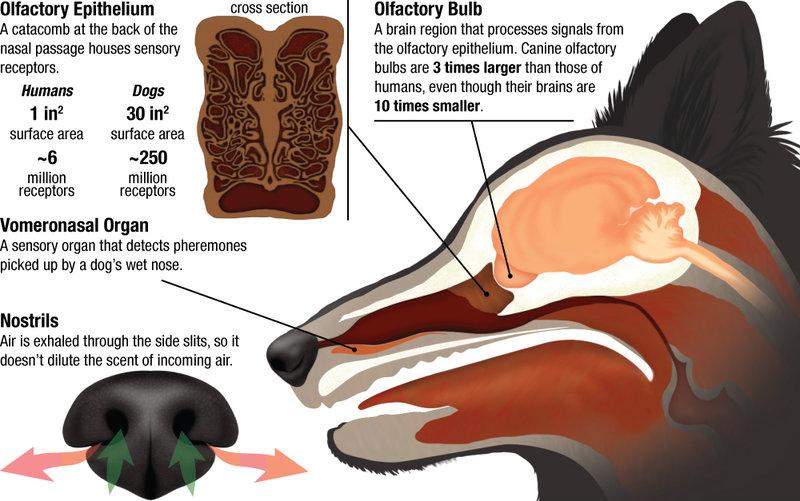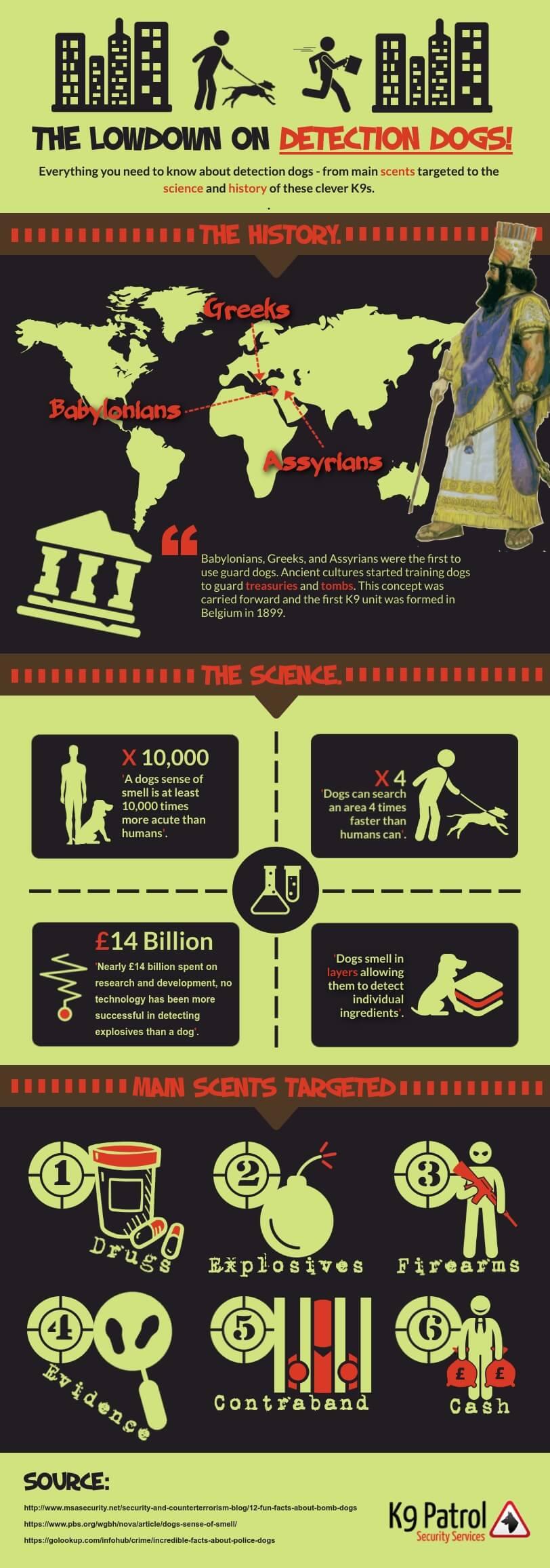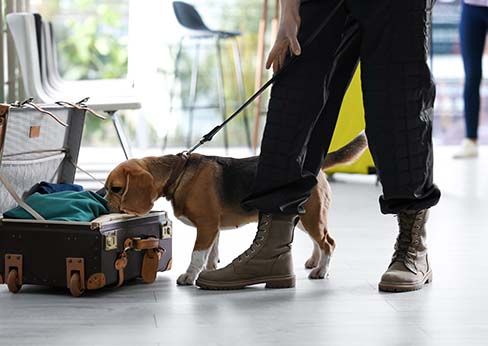In this post:
- What is a dog’s sense of smell compared to humans?
- Fun facts about a dog’s nose
- How do dogs sniff out cancers?
- Detection dogs
Dogs are known for having an incredible sense of smell. They are commonly used as drug-sniffing dogs, search and rescue, and have even been known to sniff out certain cancers.
What is a dog’s sense of smell compared to humans?

Picture credit: Hiking & fishing
Dog’s noses are much stronger than ours. Dogs and puppies have 220 million olfactory receptors in their noses. Humans only have 5 million. Their noses are 10,000 to 100,000 times more acute than ours. To put that in perspective or give an analogy, you can see as far as a third of a mile while your dog can 3,000 miles away!
Fun facts about a dog’s nose:
- The lubrication on your dog’s nose helps trap scents and keep them.
- Unlike ours, dog’s nostrils work independently of each other.
- Dogs don’t exhale through their nostrils but rather through the slits found on the sides of their noses.
- Your dog’s nose print is much like your own fingerprint, unique to its owner.
- A dry nose does not mean a dog is sick, look for other symptoms such as discoloration.

How do dogs sniff out cancers?
Research has found that your dog can be trained to sniff out breast and lung cancer just from your breath!!
Diagnostic Accuracy of Canine Scent Detection in Early and Late-Stage Lung and Breast Cancers
Lung and breast cancers at leading causes of cancer death. There are biometric markers called volatile organic compounds that are on the breath of a patient with cancer. This study trained 5 ORDINARY HOUSEHOLD dogs (with POSITIVE REINFORCEMENT) to distinguish the scents from 55 lung and 31 breast cancer patients from 81 healthy controls. They found that they were able to train these normal dogs to correctly identify scents from the different patients! Read the full article by selecting here.
Olfactory Detection of Prostate Cancer by Dogs Sniffing Urine: A Step Forward in Early Diagnosis
In this article, a Belgian Malinois shepherd (your common police and military dog) was trained with clicker training (still positive!!) to recognize urine from patients who had prostate cancer. This amazing dog was then able to correctly identify the cancer samples 30 out of 33 times! That is a 91% accuracy! Read the full article by selecting here.
Why dogs?
American Veterinarian offers this answer: “A dog’s anatomy allows it to sniff pretty much continuously, separating air into one stream for respiration and into another stream for smelling. Pro- proportionally, the section of a dog’s brain that is devoted to analyzing smells is 40 times larger than that section in humans. Add to this that current cancer detection methods are often less than accurate. In many cases, symptoms don’t appear until the disease is in its late stages. And many types of cancer, such as ovarian and prostate, can’t be detected reliably at early stages.”
Detection Dogs

Final Thoughts
Dog’s noses are very amazing. This keen sense of smell has been very useful for helping people with their work. Many dogs can be trained to sniff out almost anything. This great smelling ability can also get your dog into trouble. They can easily find the leftover in the trash or find where you are keeping their treats.





